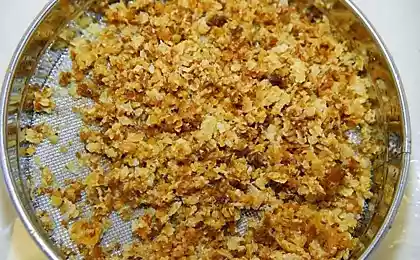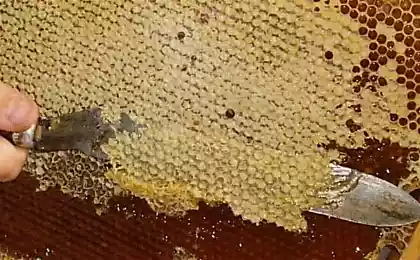582
zabrus bee

Bee zabrus: a bit of history
. One day, in the distant and difficult time, when the food is valued very highly, beekeeper got sick a cold. Often he sniffles, wipes and more unbearably wanted to eat, and he decided to chew on something. At this time the evacuation was carried out honey.
Next to it in a bucket of wax was cut, cooked to melting on honeycombs. Without hesitation, the beekeeper scooped up a handful of wax and into his mouth. He chewed it for a long time, knowing that there is almost no honey, while in the mouth did not remain one wax. After a while he again repeated his action and was surprised to see that the nose "has ceased to escape».
By evening, he several times repeated chewing of wax and honey, and runny nose disappeared completely. So it was, and the fact remains that after repeated chewing product called zabrus bees disappear many diseases
. Bee zabrus - a top lid honey comb, they are cut while pitching to give honey to freely develop into extractor. This unique product is contained and jelly, and propolis and pollen. Released from zabrus honey is considered the most therapeutic and delicious, because it has a high biological activity.
How useful zabrus?
Since bees zabrus characterized by a strong antiseptic, regenerative and anti-inflammatory properties, it has low allergenicity. With his long-term use does not develop addictive microbial flora, which means that it distinguishes it from any chemicals.
If we add to this that the wax and zabrus used more to treat osteochondrosis, arthritis and osteoarthritis, as well as for the local treatment osteomelitov, the benefits zabrus quite obvious.
As part zabrus, among other things, and there is pollen.
Pollen chemically composed of many vitamins, flavonoids, carotenoids, and also includes ash elements, mucoproteins, amino acids, organic acids, fats and lipids, albumins, globulins and enzymes, carbohydrates 28. Only the composition of amino acids in the pollen exceeds 6 times the beef. Pollen is rich in vitamins E, C, B, B1, B2, B6, folic and pantothenic acid.
1. Vitamin E - tocopherol it;
2. Vitamin B1 - antinevroticheskoe means;
3. Vitamin B2 - improves metabolism;
4. Vitamin B6 - promotes growth;
5. Folic acid - used for anemia;
6. Pantothenic acid - helps with neuro-muscular disorders and skin diseases.























